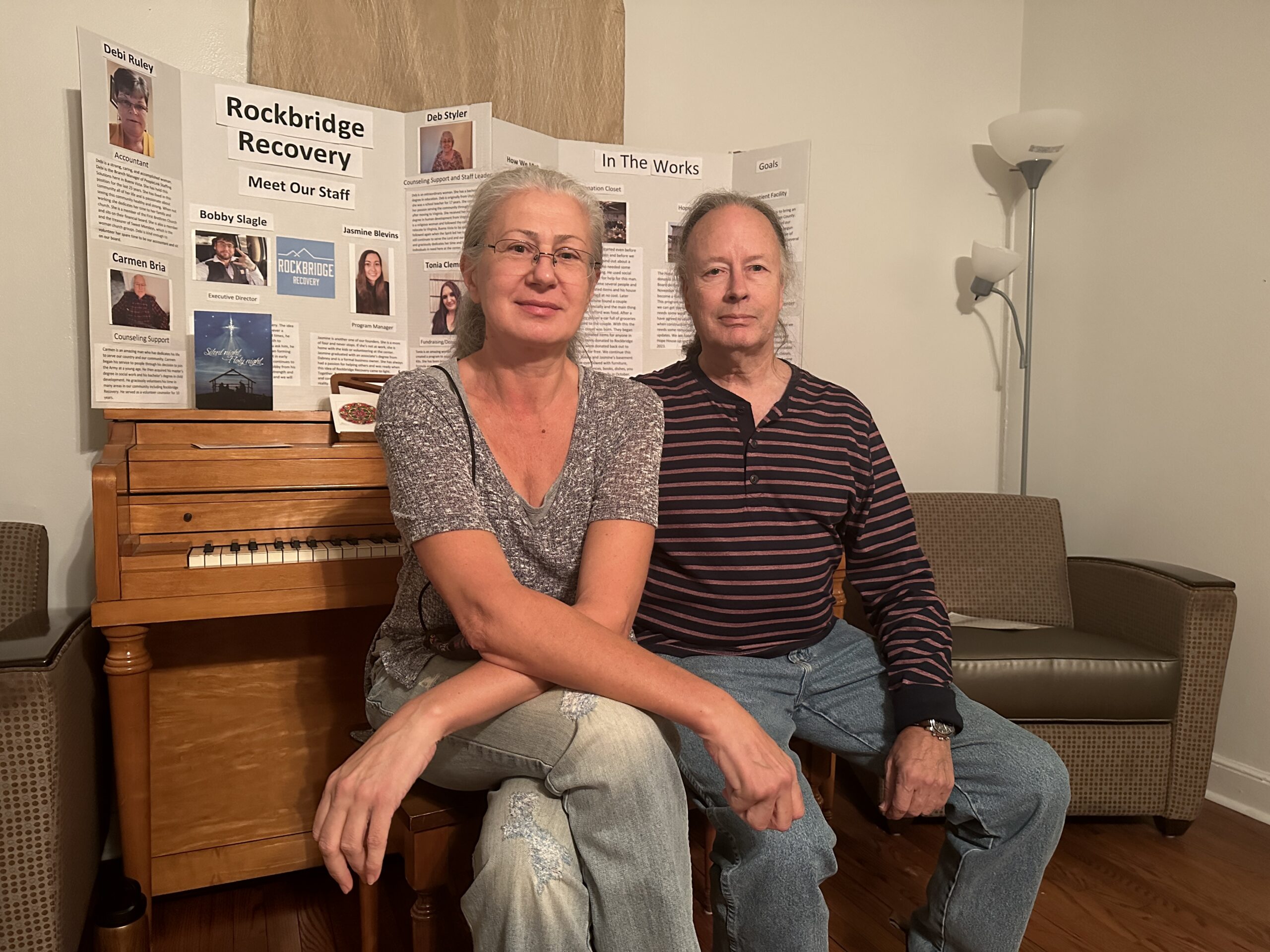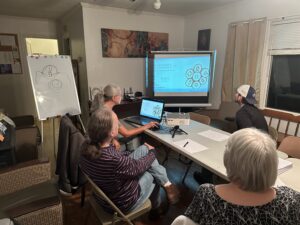
By Teddy Jacobsen
A soft overhead light illuminates the front living room of the Rockbridge Recovery building in Buena Vista on a recent Monday evening as a collection of seven friends, family and strangers sit together around two foldable tables while they draw circles on pieces of paper.
Irmina Santaika has spent the past 35 years of her life developing the activity designed to connect the mind and body in a pursuit of self-improvement. She has a background in child psychology and education, which she combined with ancient East Asian healing practices to create her program. She calls it PATCH, or Projective Approach to Corrective Healing.
When he’s not working, Santaika’s husband, Ron Stiles, acts as her assistant with the program. They moved to Buena Vista three years ago after living in New York.
PATCH builds on East Asian cultures and religions
The PATCH methodology uses techniques and activities, such as drawing and coloring, to analyze emotions and behavior. The main activity Santaika walks her clients through is drawing an ancient Buddhist creation called mandalas.
The word mandala is Sanskrit for the word circle. It is often associated with practices of meditation and repetition. Eastern religions often incorporate references to its respective deities and religious symbols in the artworks.

Santaika said she incorporates circles and mandalas in her teachings because they appear so frequently in the natural world. Things such as eyes and cells are examples of circles and mandalas, respectively, in nature.
“We deal with very natural forces and the subconscious to express our inner selves,” she said.
The mandala drawing starts with a cluster of seven small circles inside a larger circle. Each smaller circle represents a different aspect of a person’s life, such as relationships with others.
From there, Santaika asks her clients to draw ellipses stemming from the group of circles toward the edges of the outer, big circle. She then analyzes different aspects of a client’s life, depending on the balance and consistency of the person’s ellipse drawings.
She said she can read her clients’ drawings and know how their subconscious minds are struggling with specific aspects of their lives. The healing part of the process occurs when she asks her clients to fill in the larger circle with as many circles as they can or want. She said the goal is to reach a completed drawing without any gaps or sharp lines.
“Consistency and intention is key in actually seeing lasting changes in life,” Stiles said.
Stiles said the process of drawing plays a big factor in the healing process because it focuses the mind on a singular task. He said strengthening the motor-connection between a person’s hand and brain through the drawing of mandalas yields the most substantial step towards recognizing the power of personal development.
Both Santaika and Stiles said it’s important for their clients to incorporate drawing mandalas in their everyday schedules.
“Mandalas help make you the best ‘you’ you can be each day,” Santaika said.
Recovery fit for all ages

The PATCH class met last month for the first time. Santaika holds the hour-long sessions on the first and third Monday of each month. Anyone is welcome to attend the sessions, even children, she said.
Santaika put her program into practice with the help of Rockbridge Recovery in Buena Vista. Bobby Slagle, co-founder and executive director of Rockbridge Recovery, said he first met Santaika and Stiles last September and has attended all their classes so far.
Rockbridge Recovery opened last July. Slagle started the nonprofit to help members of the community struggling with issues, such as addiction, homelessness and abuse.
“We want to reach people and let them know that they’re not alone and tell them to come out and take advantage of these programs,” Slagle said.
Most people attending the class are still learning the background and process of creating mandala drawings. Slagle said he has learned something new about himself each class.
A man from Buena Vista who declined to be identified said he is excited to continue in the program keep himself on a positive path towards his recovery from addiction.
“Consistency and intention is key in actually seeing lasting changes in life,” Stiles said.
Jasmine Blevins, the co-founder and program manager of Rockbridge Recovery, said she often visits Santaika’s home in Buena Vista to talk about life and get advice.
“Irmina has a real gift for telling you exactly what real issues you’re facing in your life,” Blevins said, “even if you don’t tell her what’s wrong or she doesn’t know you that well.”
